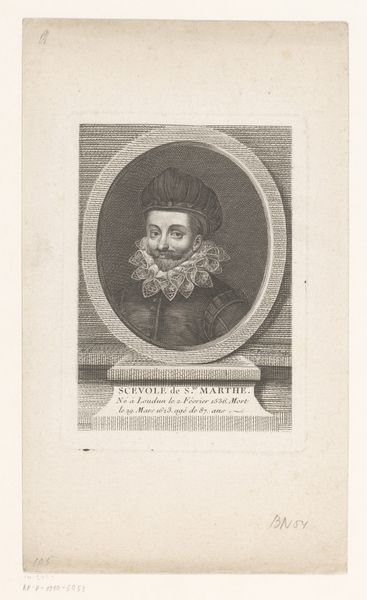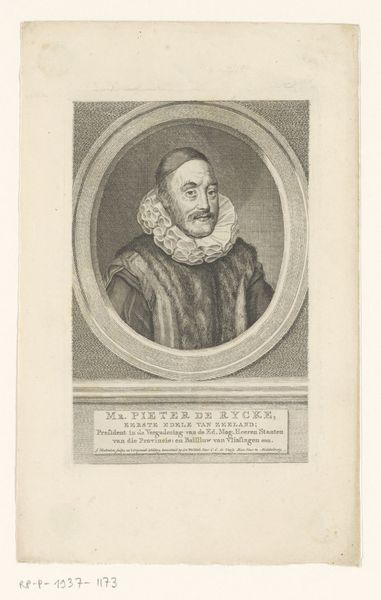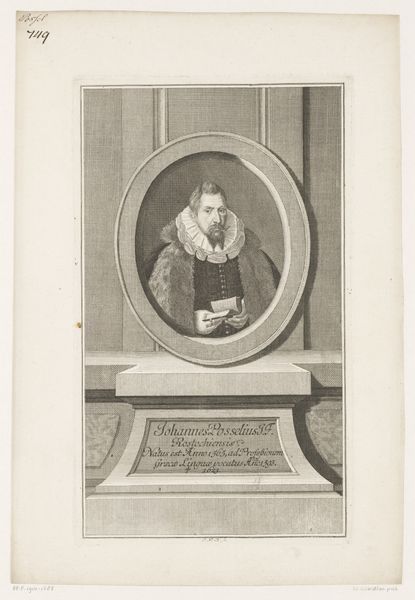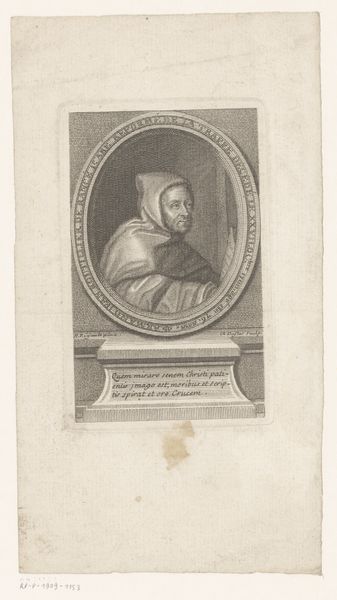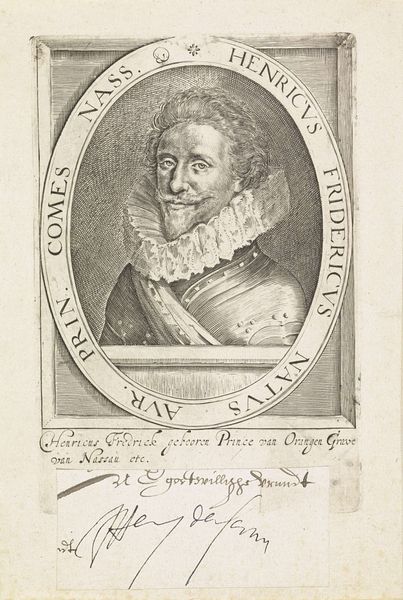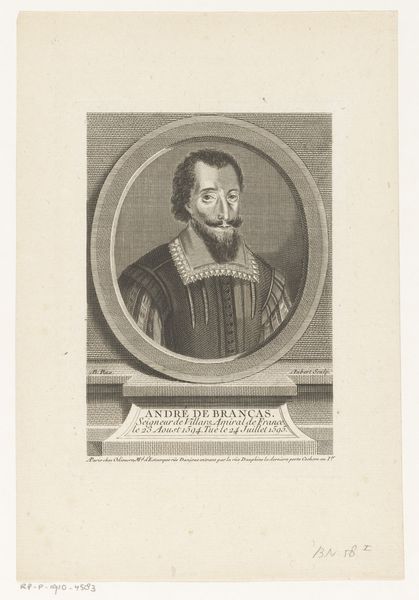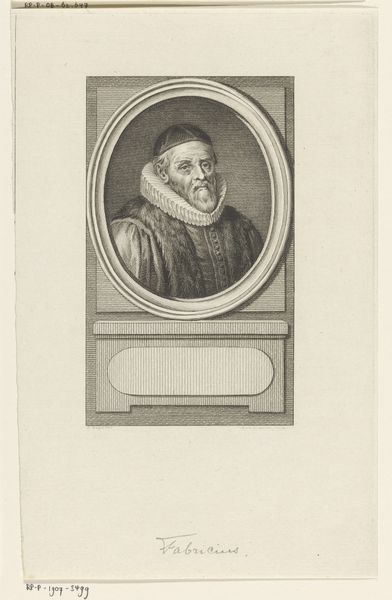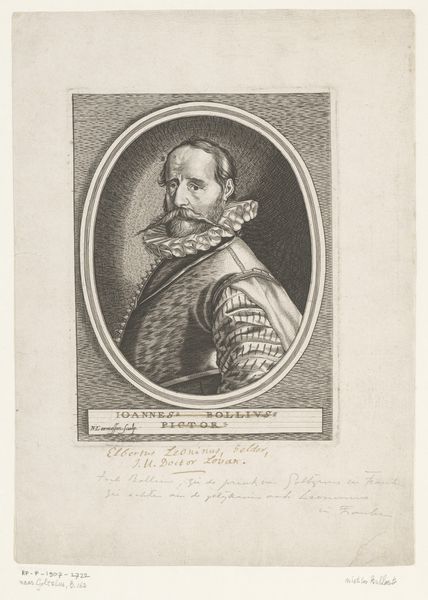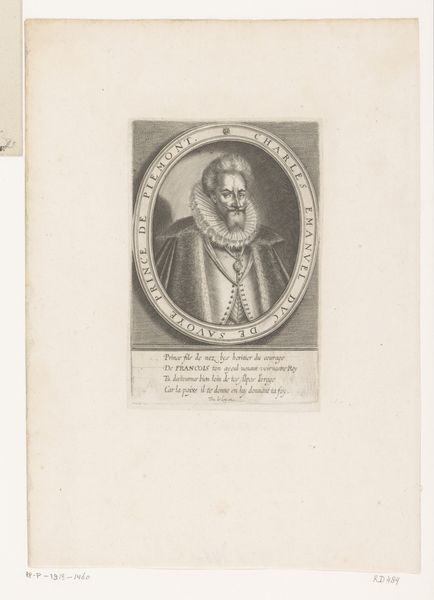
print, engraving
#
portrait
#
baroque
# print
#
history-painting
#
engraving
Dimensions: height 158 mm, width 113 mm
Copyright: Rijks Museum: Open Domain
This is a portrait of Jacques II de Goÿon de Matignon, made by Michel Aubert sometime in the first half of the 18th century. It’s an engraving, a printmaking technique that involves incising an image onto a metal plate, inking the plate, and then pressing it onto paper. Engraving was a highly skilled, labor-intensive process. The quality of the final print depended on the engraver's expertise in using specialized tools to create fine lines and textures. Look closely, and you can see how Aubert has used different densities of lines to create tonal variation, giving the portrait a lifelike quality. In its time, engraving was not just a craft but also a key technology in the distribution of images. Prints like this one allowed portraits and other images to be reproduced and disseminated widely, contributing to the growth of visual culture and the spread of ideas. So, next time you look at a print, remember that it's not just an image but also a product of skilled labor and a window into the social and cultural context of its time.
Comments
No comments
Be the first to comment and join the conversation on the ultimate creative platform.
